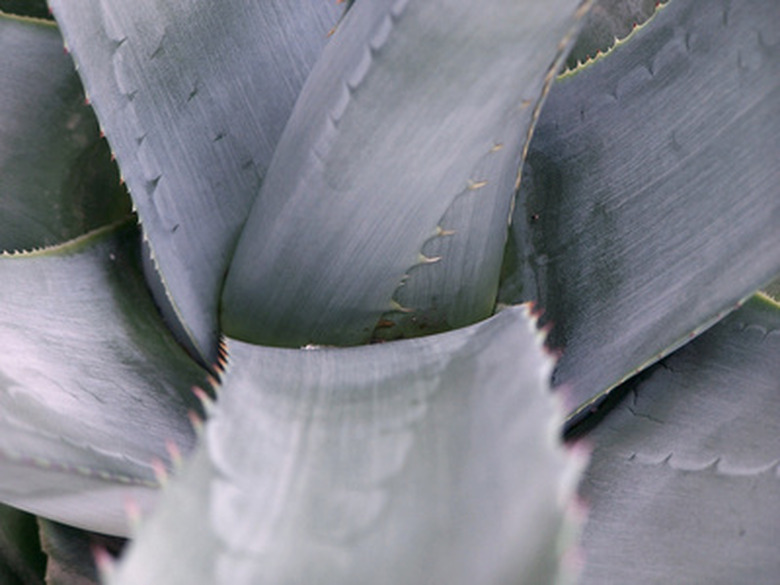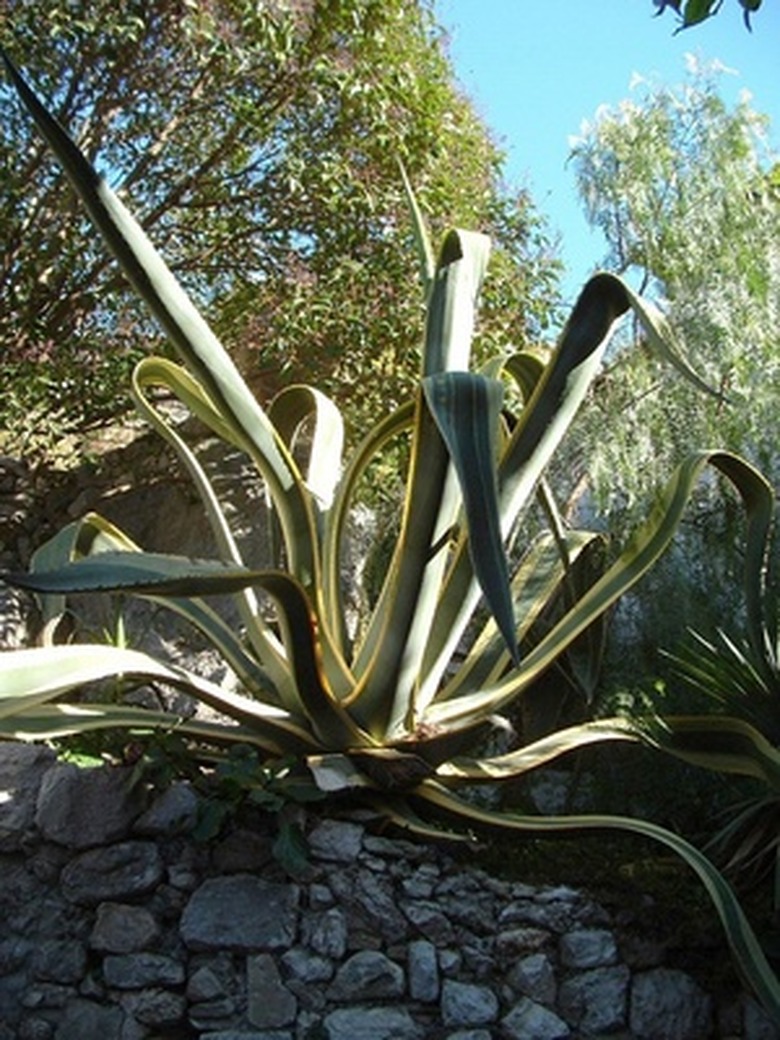Agave Cactus & Disease
Of the 200 recognized species of agave, most varieties will bloom only once and then die. The flowers feature both male and female parts and can hold water in its large, fleshy, spiked leaves. Several diseases commonly affect the agave, but diligent gardening and care can prevent or cure most diseases.
Anthracnose Fungus
Anthracnose fungus creates small lesions on the spiky leaves of the agave and the the crown of the plant. A red or orange spore mass grows inside the lesions and they spread easily from water splashing either via an overhead sprinkler or from rainfall. Treat the agave using thiophanate methyl, a broad-spectrum fungicide, available at most local garden centers. To prevent anthracnose fungus, use a ground soaking hose or a drip line.
- Of the 200 recognized species of agave, most varieties will bloom only once and then die.
- A red or orange spore mass grows inside the lesions and they spread easily from water splashing either via an overhead sprinkler or from rainfall.
Root And Crown Rot
The most common cause of root and crown rot in agave plants comes from the soil-borne pathogens (diseases caused by either a virus or bacteria) bacterium Erwinia and the fungus Fusarium. The fungus commonly occurs when the plant grows in shady conditions or if there is an over abundance of moisture in the air or soil. The fungus appears as black lesions on the leaves. ITreat fungus early by cutting back all infested agave leaves.
Agave Snout Weevil
The agave snout weevil feeds on the leaves and crown. The female beetle lays its eggs between the leaf spikes, and the eggs hatch into grubs/larvae which feed on the agave. The agave snout weevil can allow pathogens to enter the agave which can eventually kill the plant. Apply a broad-spectrum insecticide in the spring to help prevent the agave snout weevil.
- The most common cause of root and crown rot in agave plants comes from the soil-borne pathogens (diseases caused by either a virus or bacteria) bacterium Erwinia and the fungus Fusarium.
- The female beetle lays its eggs between the leaf spikes, and the eggs hatch into grubs/larvae which feed on the agave.
Plant Bugs
Plant bugs (caulotops barberi) feed on the agave in late summer to early fall. The agave turns yellow, eventually killing the plant. Apply insecticidal soap or a broad-spectrum insecticide in the early morning or late evening to control the plant bugs.
Eryophid Mites
Eryophid mites are microscopic and not visible to the naked eye. Mite damage causes deformed new leaves and dying old leaves. Control eryophid mites by applying a systemic or contact powder miticide for agave plants, available at garden supply stores.


